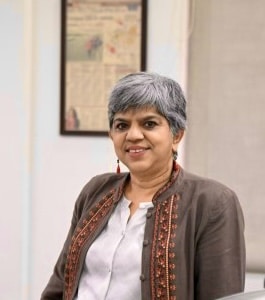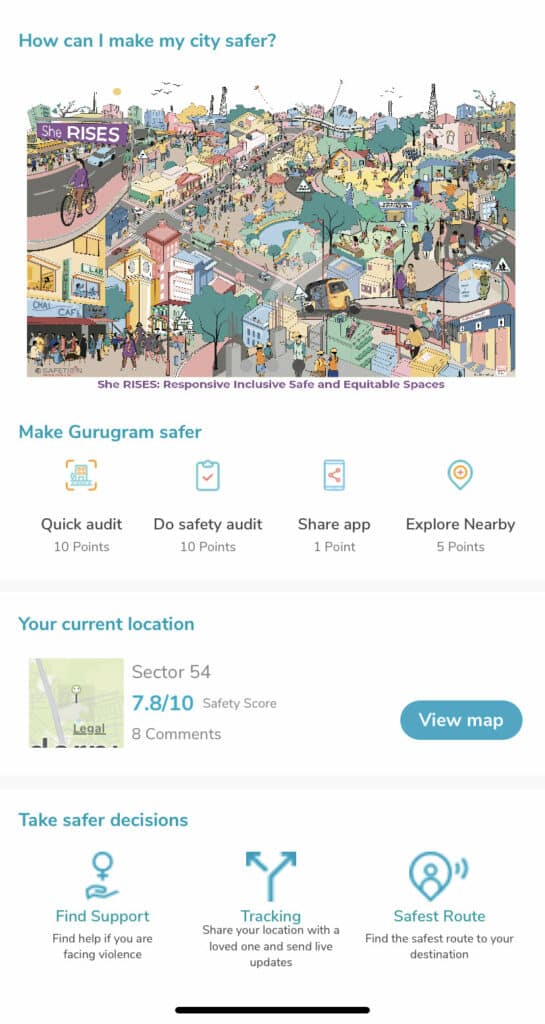
Approximately over 1.3 million people are dying due to road accidents globally, with the majority of children and young people as victims (WHO 2022). Road safety is an issue of global significance, transcending borders and impacting individuals from various groups. Regardless of the country they reside in, people have diverse safety requirements.
In a world where road safety remains a pressing global concern, it is crucial to revolutionise our transport systems. Dr. Kalpana Viswanath shared in our captivating interview her experience in the field. Dr. Kalpana is an outstanding leading figure in road safety development and the founder of Safetipin, a platform dedicated to enhancing road safety globally, providing support and resources for safer roads worldwide
During the interview, it became evident that unsafe conditions on roads are preventable. She emphasised the need to shift people’s perspective, recognising that streets should revolve around people rather than being solely designed for vehicles. This shift entails a fundamental perspective, reimagining the way public space is planned and giving priority to the safety and well-being of pedestrians and other vulnerable road users. Whilst the journey towards safer roads may not be easy, it is undeniably crucial and requires concerted efforts from institutions, governments, and individuals alike.
The journey to a safe city is not an easy one, but I do not think we have to look for what is easy. We have to look for what is right and equitable, and this requires the hard work of institutions, government, and society.
Dr. Kalpana, Safetipin’s Founder
There are many factors that affect the perception and feeling of safety. It is crucial to listen to the needs of the people to create safe public spaces for everyone.
According to Dr. Kalpana, a safe city should include several key ingredients to ensure the well-being and inclusivity of its inhabitants:
We, as citizens, must be able to enjoy the cities where we live. Having an enjoyable city means having a safe city, and that is why we have to humanise cities.
Dr. Kalpana, Safetipin’s Founder
This means accounting for the specific requirements of children, ensuring safe routes to schools, considering the safety concerns of women, accommodating the needs of older people, and implementing measures that cater to people with disabilities, among other considerations.
Dr. Kalpana emphasised the direct correlation between sustainable mobility and road safety and that both goals are intertwined and require a collective effort to achieve shared objectives.
In order to achieve sustainable mobility and build safer roads, it is crucial to slow down and rethink our approach to transportation, aligning both agendas.
Dr. Kalpana, Safetipin’s Founder
In the first place, this requires policy changes that support the integration of road safety and sustainable mobility, as well as the establishment of safe, affordable, and environmentally friendly public transport systems. Dr. Kalpana highlighted the importance of fostering partnerships between the transportation industry and movements advocating for safe public spaces, as these aspects are inherently interconnected and crucial for achieving sustainable development.
Moreover, she underlined the need for increased societal awareness and action. This includes a focus on measuring the impact of road safety initiatives and effectively communicating the data to the public. By providing concrete evidence for road safety, people are more likely to utilize them, ultimately resulting in positive outcomes and encouraging further progress.

Safetipin platform has yielded significant positive impacts in various urban areas across different countries. The platform’s implementation in Delhi is just one of the notable success stories. By identifying numerous dark spots and areas lacking proper lighting through the app, Safetipin facilitated collaborative efforts with the government, resulting in a reduction of over 5,000 such spots. This achievement improved the safety and security of urban environments.
Delhi’s experience with Safetipin exemplifies the platform’s effectiveness in empowering individuals to enhance their safety. Specifically addressing women’s needs, Safetipin provided valuable advice on selecting safer routes, assessing the safety of neighborhoods, and identifying secure transport stations. Furthermore, the platform offered support to women who faced any form of harassment in public spaces, demonstrating its commitment to fostering safer communities.
The success of Safetipin extends beyond Delhi, reaching countries like South Africa and Colombia. In Bogota, for instance, where a thriving cycling community exists, collaboration with the country’s Secretary of Women enabled Safetipin to equip women with crucial information for navigating the city without encountering danger.

To support the development of platforms and movements focused on promoting safe spaces and green mobility, people should utilise these tools. When individuals download the MySafetipin App and actively contribute their experiences and feedback, these platforms become stronger and more powerful in their ability to support and uplift society.
While many cities around the world offer immense beauty and attractions, there are instances where caution needs to be exercised, particularly during late-night hours.
The focus on road safety aims to provide information and resources to society, transforming urban narratives from potentially frightening experiences to positive and enjoyable ones. The goal is to create cities that are welcoming and enjoyable for every individual. Cities where fear is minimised, and people can freely explore and walk without constant apprehension. While it is important to remain cautious, the overarching aim is to foster an environment where cities become vibrant and inclusive spaces for everyone.
As this journey towards safer roads and more inclusive cities continues, it is evident that a collective effort involving institutions, governments, and society as a whole is essential. By working together, we can create a future where road safety is a global priority and cities become vibrant, accessible, and welcoming environments for everyone to thrive.
You are currently viewing a placeholder content from X. To access the actual content, click the button below. Please note that doing so will share data with third-party providers.
More Information